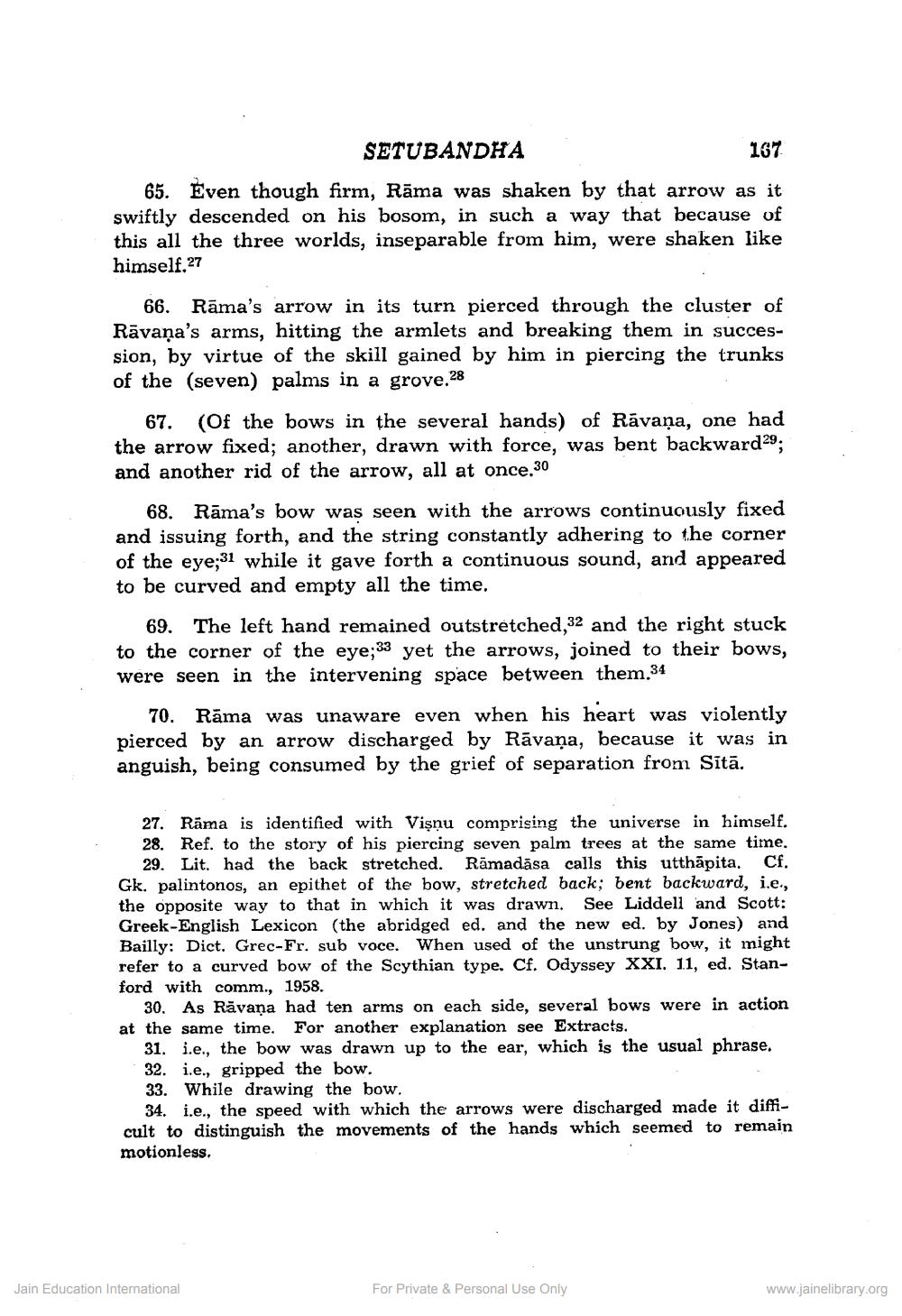________________
SETUBANDHA
167
65. Even though firm, Rāma was shaken by that arrow as it swiftly descended on his bosom, in such a way that because of this all the three worlds, inseparable from him, were shaken like himself.27
66. Rāma's arrow in its turn pierced through the cluster of Rāvaņa's arms, hitting the armlets and breaking them in succession, by virtue of the skill gained by him in piercing the trunks of the (seven) palms in a grove.28
67. (Of the bows in the several hands) of Rāvana, one had the arrow fixed; another, drawn with force, was bent backward 29, and another rid of the arrow, all at once.30
68. Rāma's bow was seen with the arrows continuously fixed and issuing forth, and the string constantly adhering to the corner of the eye;31 while it gave forth a continuous sound, and appeared to be curved and empty all the time.
69. The left hand remained outstretched,32 and the right stuck to the corner of the eye;33 yet the arrows, joined to their bows, were seen in the intervening space between them.34
70. Rāma was unaware even when his heart was violently pierced by an arrow discharged by Rāvana, because it was in anguish, being consumed by the grief of separation from Sītā.
27. Rāma is identified with Vişnu comprising the universe in himself. 28. Ref. to the story of his piercing seven palm trees at the same time.
29. Lit. had the back stretched. Ramadāsa calls this utthāpita. Cf. Gk. palintonos, an epithet of the bow, stretched back; bent backward, i.e., the opposite way to that in which it was drawn. See Liddell and Scott: Greek-English Lexicon (the abridged ed. and the new ed. by Jones) and Bailly: Dict. Grec-Fr. sub voce. When used of the unstrung bow, it might refer to a curved bow of the Scythian type. Cf. Odyssey XXI. 11, ed. Stanford with comm., 1958.
30. As Rāvana had ten arms on each side, several bows were in action at the same time. For another explanation see Extracts.
31. i.e., the bow was drawn up to the ear, which is the usual phrase. 32. i.e., gripped the bow. 33. While drawing the bow.
34. i.e., the speed with which the arrows were discharged made it difficult to distinguish the movements of the hands which seemed to remain motionless
Jain Education International
For Private & Personal Use Only
www.jainelibrary.org




